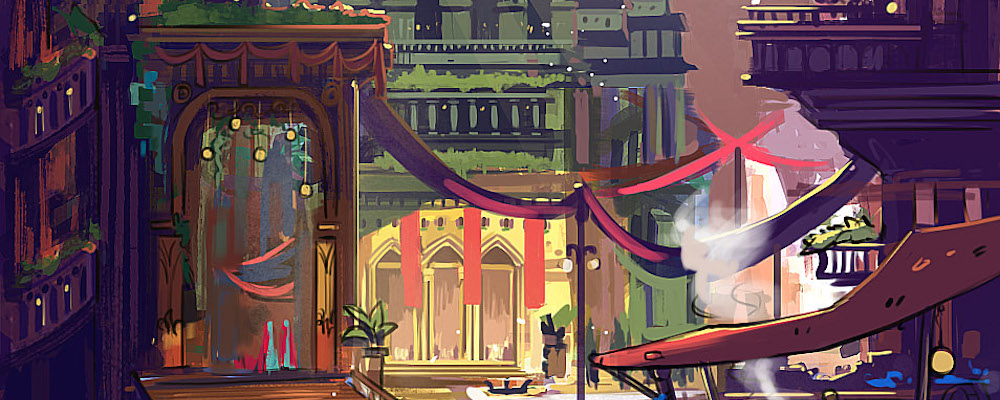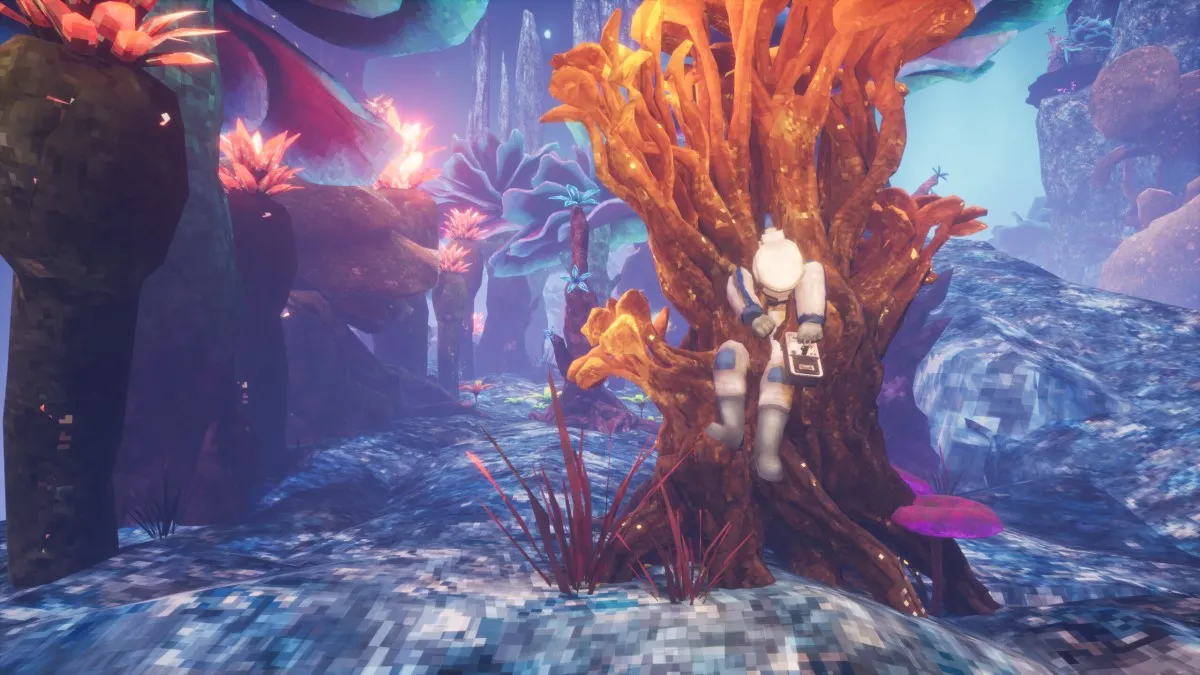Character synergy, combat, and skill systems detailed
While at PAX East, I was fortunate enough to schedule a chat with the co-founder and creative director of Singapore-based Witching Hour Studios, Ian Gregory, to talk about the studio’s beautiful upcoming “pause-for-tactics” 2.5D isometric RPG Masquerada: Songs and Shadows, planned for release on PC, Mac, and consoles (TBD) sometime in early 2016.
The game takes place in a Venetian-inspired fantasy city called Ombre, and as it happens, is the only place in the game’s world where magic exists. However, discovering and donning rare masks are the key to learning and harnessing that magical power. Gregory describes the mask’s function in the game as that of “batteries,” storing built-up magical energy to be released in the form of the different classes’ skills and abilities.
Players follow the story of Inspettore Cicero Gavar as he returns from exile to solve a kidnapping that, as the game’s description states, will “shake up the foundations of the city.” Cicero, your starting character in the game, is a Maestro, a hybrid class that draws from the skills of all three main character classes.
The three main classes available in the game are the Sicario, who fills the role of an assassin; the Pavisierre, the tank in the group; and lastly, the Dirge, a bard-like character who can cast both summons and buffs. Each class will have access to eight to ten different abilities, all of which possess their own skill trees.
While discussing these various systems, the word synergy came up many times during our brief chat. It became obvious that the team has put a lot of thought into how each classes’ skills can and should complement the others, ensuring that no single character is ever considered the “best.”
As such, each character class has specific strengths and weaknesses, but if each are used effectively, players can manipulate the battlefield by splitting up and isolating creatures from large mobs, as well as maximize the group’s damage output potential by layering the classes’ complimentary spells and skills into the more lethal combined attacks.
Gregory showed me several examples of how the different classes could work together to greater effect. For example, using a pull-like Void spell to gather enemies into a tight group could be combined with a well-timed use of the Sicario’s Fissure ability — a charge attack that damages all enemies in its path — to maximize your damage output.
Another method of combining the group’s unique characteristics would be to leverage their elemental capabilities. An example of this would again make use of the water-based Void ability, but this time, instead of lining up enemies for an efficient physical attack, another character’s lightning ability could come into play, electrocuting the drenched mob.

Positioning on the battlefield also has additional importance in Masquerada. Gregory notes that “all player characters, NPCs, and enemies have armor (seen in the video above as color-coded circles surrounding each character) that must be dealt with before being able to damage them directly.” For example, character’s attempting to tangle with foes head-on will find themselves dealing damage only to that foe’s armor until it can be destroyed.
However, armor mitigates only half the damage dealt to a target when struck from the flank and attacks to the rear cause full damage to a target, rendering armor useless. A side note to armor is that the player character’s armor has the capacity to regenerate unlike an enemy’s, which is rendered useless after a certain number of attacks. Also, certain characters, such as the Sicario, can sacrifice armor altogether for an added boost to damage output at the risk of becoming injured in the act.
Character skills are another important aspect that warrants explanation when discussing Masquerada‘s combat systems. As shown in the video, each character has a row of different abilities at their disposal in the action bar. Gregory notes that anyone familiar with Dota 2 or League of Legends will have a general idea of how to use them from the onset, e.g., after each use of a particular ability it won’t be available again until its cool-down timer refreshes.
One big difference in the way Masquerada handles skills is in how they evolve over time. Witching Hour Studios has chosen to eschew experience points altogether. Instead, at certain key points in the game’s story each character will be issued a set amount of skill points to spend in their respective skill trees. This not only avoids tedious grinding, but it ensures that the developers have a good handle on all of the potential outcomes of character development and can tailor the game’s encounter difficulty accordingly.

Also, each skill can be modified as you progress further in the game, allowing you to tailor characters to your particular play style. Gregory gives a specific example of this when talking about upgrading Cicero’s teleportation skill, Zephyr. In this instance, Zephyr can go two ways: offensively or defensively. The offense-oriented modification blasts out hot air when Cicero re-appears and the defensive modification blasts cold air to freeze enemies at Cicero’s original location, buying him valuable time to recover or cast other spells.
As the “pause-for-tactics” descriptor indicates, all aspects of Masquerada‘s combat can play out in real time or the game can be paused to enter a tactical mode by hitting the spacebar for more contemplative and complex setups. You can of course use a mixture of the two if you wish. It’s up to the player on how they decide to enjoy the game. However, as mentioned earlier in the article, the game’s combat is designed around leveraging each of the character’s special abilities in concert with the others to achieve the greatest effect, so the tactical mode will probably be necessary for the more dangerous encounters.
A year seems like a long way out to be this intrigued about a game, but I must admit, after getting some quality hands-on experience coupled with Gregory’s intricate and passionately detailed description of the mechanics, Masquerada: Songs and Shadows has turned out to be one of my first most-anticipated games coming out next year.





Published: Mar 18, 2015 01:00 pm